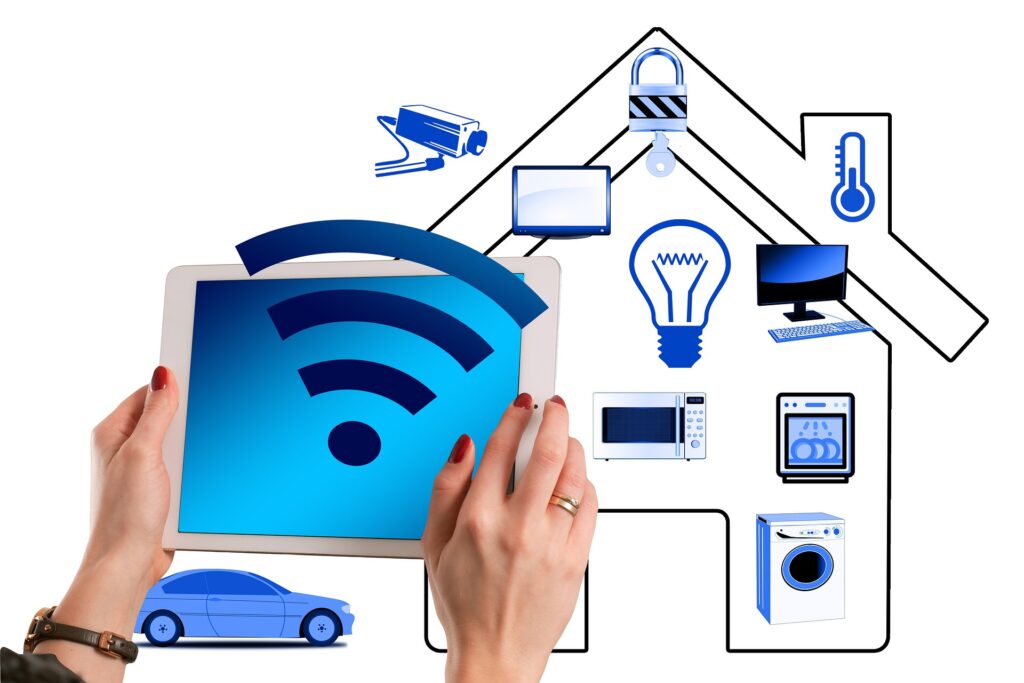It’s almost that time of year again — WifiForward’s unofficial IoT week. Students are returning to campus this fall, but while schoolchildren are getting smarter, your house is, too. We’ve seen an uptick in “smart” devices connecting to the internet through Wi-Fi, Bluetooth and other unlicensed spectrum.

Image by Geralt
Lights, locks, refrigerators, vacuums, litter boxes, personal item trackers like AirTags and Tiles — they’re all connected to the IoT. Thirty-one percent of respondents to the Deloitte study, highlighted last week by WifiForward, have smart home security systems, which can serve purposes like monitoring the dog walker, thwarting package thieves/”porch pirates,” live streaming farm animals and babysitting the kids. Further stats cited include those with standalone outdoor security cameras 29% and 28% of consumers with combination doorbells/built-in cameras. And while those security systems have fun uses of checking in on the pets while you’re away at work or talking to your child when they get home from school, they provide important safety and cost benefits, too. 68% of respondents who use smart home devices say it makes them feel safer and 69% of those with a smart thermostat said the device helps reduce their energy costs.
Advocating for a future-proof policy surrounding the IoT has led to the robust connected-device market that benefits us today. Lawmakers and regulators can continue this momentum to reap the benefits of safer, easier and more affordable lifestyles for all Americans by expanding the unlicensed spectrum made available for Wi-Fi, smart devices and the IoT.
